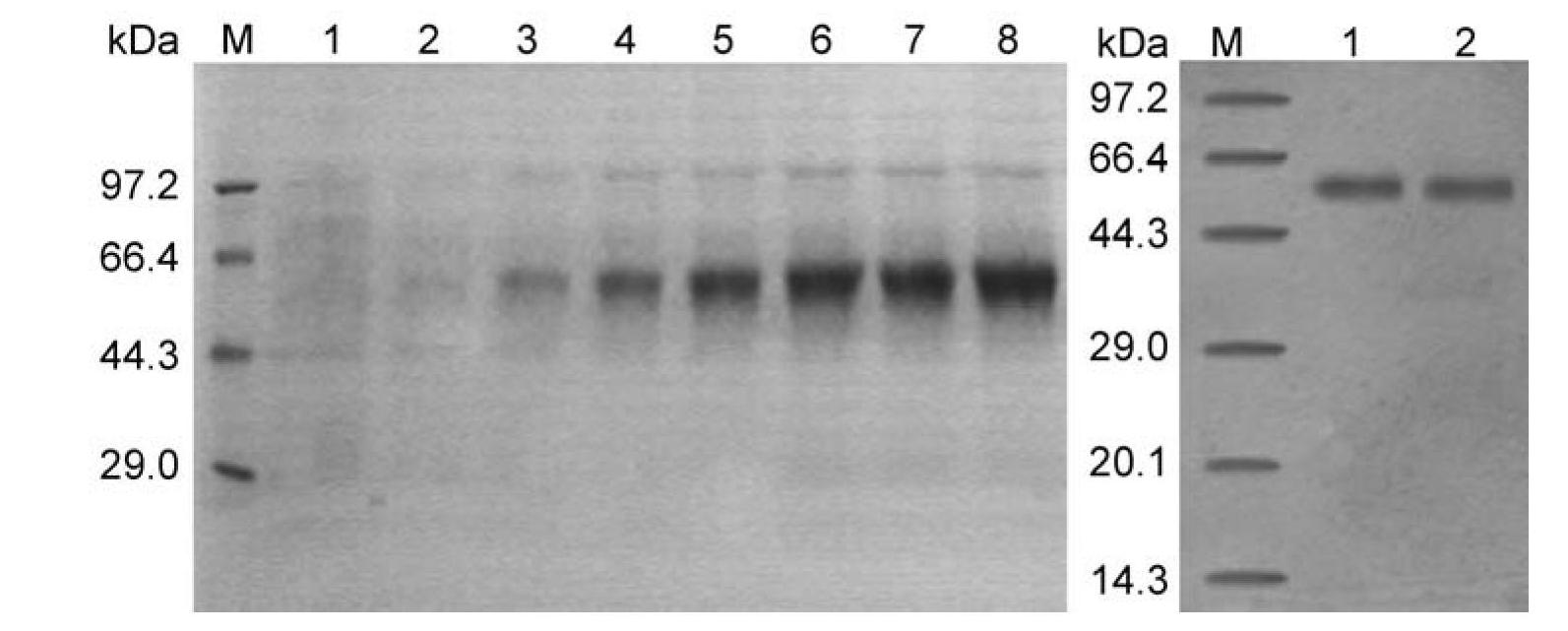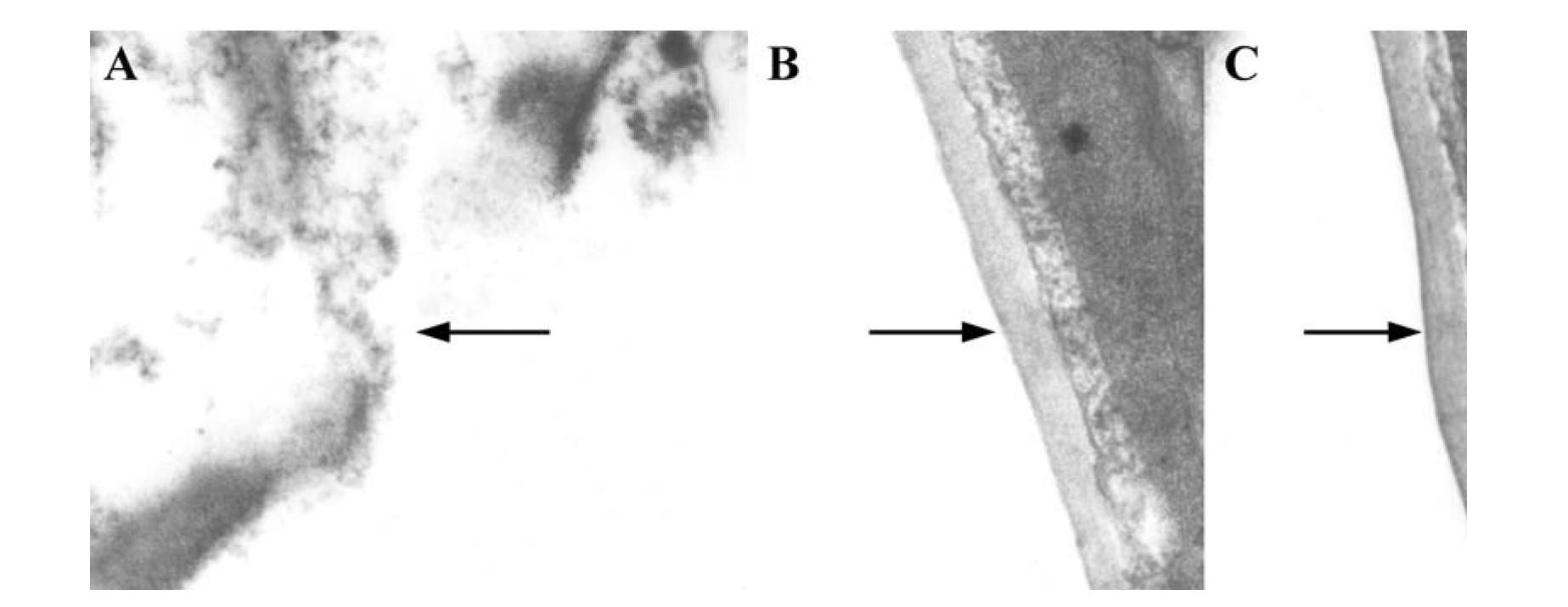Polygalacturonase PCIPG21 from phytophora capsic, and coding gene and application thereof
A technology of encoding and amino acids, which is applied in the fields of application, genetic engineering, and plant genetic improvement, and can solve problems such as agricultural production losses
- Summary
- Abstract
- Description
- Claims
- Application Information
AI Technical Summary
Problems solved by technology
Method used
Image
Examples
Embodiment 1
[0049] Embodiment 1, the preparation of polygalacturonase
[0050] 1. Expression of polygalacturonase PCIPG21, PCIPG2 and PCIPG5
[0051] 1.1 Preparation of the coding genes of polygalacturonase PCIPG21, PCIPG2 and PCIPG5
[0052] The inventors of the present application discovered polygalacturonase PCIPG21 gene, PCIPG2 gene and PCIPG5 gene from P.capsici SD33 (J.Phytopathol 157:585-591, 2009) (Shandong Agricultural University) . Wherein, the nucleotide sequence of the polygalacturonase PCIPG21 gene is shown in sequence 1 in the sequence listing, its coding sequence is the 1-1173rd position of sequence 1, and it encodes the protein of sequence 2. Positions 1-57 of Sequence 1 encode a signal peptide consisting of 19 amino acid residues. The nucleotide sequence of the PCIPG2 gene is shown as sequence 3 in the sequence listing, and its coding sequence is the 106th-1191th position of the sequence 3. Positions 106-162 of Sequence 3 encode a signal peptide consisting of 19 amin...
Embodiment 2
[0100] Embodiment 2, polygalacturonase is to the degradation of capsicum leaf cell wall
[0101] The polygalacturonases PCIPG21, PCIPG2 and PCIPG5 purified in Example 1 were inoculated with pepper leaves by acupuncture. The specific method is as follows: take pepper seedlings of Zhongjiao No. 6 at the 4-6 leaf stage, and inoculate pepper leaves by acupuncture method. The inoculation concentrations of PCIPG21, PCIPG2 and PCIPG5 are all 700ug / mL. At the same time, PCIPG21, PCIPG2 and PCIPG5 inoculated and inactivated with sterile water were used as controls. During the period of 1-7 days after protein inoculation of pepper leaves, samples were taken every 24 hours, and the degradation of cell wall was observed by transmission electron microscope. Among them, the passivated PCIPG21, PCIPG2 and PCIPG5 were obtained according to the following method: the purified polygalacturonase PCIPG21, PCIPG2 and PCIPG5 in Example 1 were boiled in hot water for 5 minutes and then used for acti...
PUM
 Login to View More
Login to View More Abstract
Description
Claims
Application Information
 Login to View More
Login to View More - R&D
- Intellectual Property
- Life Sciences
- Materials
- Tech Scout
- Unparalleled Data Quality
- Higher Quality Content
- 60% Fewer Hallucinations
Browse by: Latest US Patents, China's latest patents, Technical Efficacy Thesaurus, Application Domain, Technology Topic, Popular Technical Reports.
© 2025 PatSnap. All rights reserved.Legal|Privacy policy|Modern Slavery Act Transparency Statement|Sitemap|About US| Contact US: help@patsnap.com



